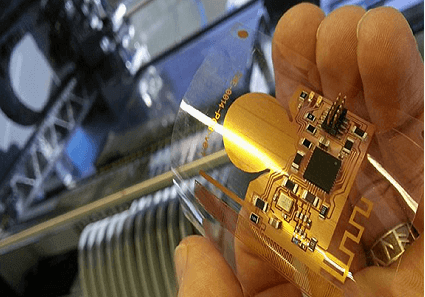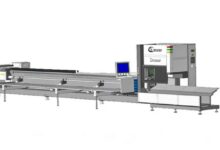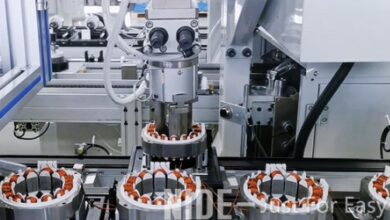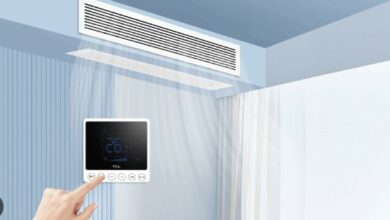How Are Flexible PCBs Used in Wearable Technology?

Imagine flexible PCBs in wearable technology like a hidden foundation supporting a masterpiece. These intricate circuit boards serve as the backbone for numerous innovative wearables, enabling them to bend, twist, and conform to the body seamlessly. Behind the scenes, a flexible PCB manufacturer meticulously crafts these essential components, ensuring durability and reliability in every design.
But how exactly do these flexible PCBs revolutionize the world of wearables? Stay tuned to uncover the versatility and impact of these tiny yet mighty components in shaping the future of wearable technology.
Key Takeaways:
- Flexible PCBs enhance durability and versatility in wearable technology.
- Integration into smart clothing revolutionizes user interaction and functionality.
- Flexible PCBs in health monitoring devices offer seamless tracking and comfort.
- Future trends include smaller, lighter devices with advanced sensors and interactive capabilities.
Advantages of Flexible PCBs in Wearables
When designing wearable technology, incorporating flexible PCBs offers greater durability and versatility compared to rigid circuit boards. Flexible PCBs are designed to bend and twist, making them ideal for wearables that need to move and conform to the body’s shape. This flexibility reduces the risk of damage from bending or stretching, ensuring a longer lifespan for the wearable device.
Additionally, flexible PCBs are lightweight and compact, allowing for a sleeker and more comfortable design. This is particularly advantageous in smart clothing and accessories where bulkiness can be a deterrent to user adoption. The flexibility of these PCBs also enables them to be integrated into various types of fabrics and materials, further expanding the possibilities for wearable technology design.
Furthermore, the adaptability of flexible PCBs makes them well-suited for wearables that require waterproof or moisture-resistant features. By incorporating flexible PCBs into wearables, manufacturers can enhance the durability and functionality of their products, providing users with reliable technology that can withstand everyday use.
Integration of Flexible PCBs in Smart Clothing
The seamless integration of flexible PCBs into smart clothing revolutionizes the way wearable technology interacts with your body. These PCBs can be woven into the fabric of clothing, allowing for a more comfortable and unobtrusive user experience. By incorporating flexible PCBs into smart clothing, designers can create garments that not only look stylish but also offer enhanced functionality. For instance, these PCBs can enable features such as biometric monitoring, GPS tracking, and even gesture control.
Smart clothing with integrated flexible PCBs is paving the way for a new era of wearable technology that seamlessly blends into your everyday life. Imagine having a fitness tracker woven into your workout gear or a health monitoring system discreetly embedded in your everyday attire. The possibilities for innovative applications are endless, from sports performance optimization to healthcare monitoring. As technology continues to advance, the integration of flexible PCBs in smart clothing will undoubtedly play a crucial role in shaping the future of wearables.
Flexible PCB Applications in Health Monitoring Devices
Integration of flexible PCBs in health monitoring devices offers a seamless and unobtrusive means of tracking vital signs and overall well-being. These devices, such as smartwatches and fitness bands, utilize flexible PCBs to collect data on metrics like heart rate, blood pressure, and even sleep patterns. The flexibility of the PCB allows these devices to conform to the body’s contours comfortably, ensuring constant contact for accurate monitoring.
Health monitoring devices with flexible PCBs are particularly beneficial for individuals who require continuous health tracking without the inconvenience of traditional monitoring methods. The lightweight and flexible nature of the PCBs ensures that users can wear these devices for extended periods without discomfort.
Moreover, the integration of flexible PCBs enables these health monitoring devices to be water-resistant, making them suitable for use during various activities, including swimming and showering. This durability enhances the longevity and reliability of the devices, providing users with continuous health insights without disruption.
Enhancing Design Flexibility With Flexible PCBs
To enhance design flexibility with flexible PCBs, consider incorporating innovative layout techniques that maximize space utilization and component placement efficiency. By utilizing flexible PCBs, you can design wearable technology that conforms to various shapes and sizes, enabling a more ergonomic and comfortable fit for the user. Incorporating flex PCBs allows you to bend and twist the circuits, optimizing the use of available space within the device while maintaining functionality.
Moreover, flexible PCBs offer the advantage of reducing the overall weight of the wearable device, making it more convenient for everyday use. With the ability to create custom shapes and sizes, you can tailor the design to fit specific wearable technology requirements, such as smart watches or fitness trackers. This customization enhances the user experience by providing a sleek and lightweight design that seamlessly integrates into daily activities. By embracing the flexibility of PCB design, you can unlock new possibilities for creating innovative and user-centric wearable technology products.
Future Trends in Wearable Technology With Flexible PCBs
Embracing the potential of flexible PCBs in wearable technology opens up exciting avenues for future innovation and advancement. As technology continues to evolve, here are some future trends to look out for:
- Miniaturization:
Flexible PCBs enable the creation of smaller and lighter wearable devices, leading to more comfortable and discreet options for users. - Enhanced Biometric Monitoring:
Future wearables are likely to incorporate more advanced biometric sensors, made possible by the flexibility and adaptability of PCBs, providing users with even more detailed health insights. - Integration with Smart Fabrics:
The integration of flexible PCBs with smart fabrics opens up possibilities for interactive clothing that can monitor health metrics, display information, and even change color or pattern based on external factors, merging technology seamlessly into everyday attire.
These trends showcase the potential for flexible PCBs to revolutionize the wearable technology industry, making devices more functional, fashionable, and user-friendly.
Can Flexible PCBs Be Used in Washable Wearable Technology?
Yes, flexible PCBs can be used in washable wearable technology. They provide durability and flexibility, allowing the devices to withstand washing cycles. Ensure proper sealing and waterproofing to safeguard the components from moisture during washes.
What Are the Limitations of Using Flexible PCBs in Wearable Devices?
When using flexible PCBs in wearable devices, limitations may include restricted power handling capacity, challenges in high-density component integration, and potential durability issues. However, advancements in technology continue to address these constraints.
How Do Flexible PCBs Impact the Overall Cost of Wearable Technology?
When it comes to the overall cost of wearable technology, using flexible PCBs can lead to cost savings. By allowing for more compact designs and efficient manufacturing processes, flexible PCBs can help reduce production expenses.
Are There Any Environmental Concerns Related to the Use of Flexible PCBs in Wearables?
When considering the environmental impact of flexible PCBs in wearables, it’s important to acknowledge concerns regarding e-waste disposal and potential chemical leaching. Proper recycling methods and material choices can help mitigate these issues.
How Are Flexible PCBs Tested for Durability and Reliability in Wearable Devices?
When testing flexible PCBs for durability and reliability in wearable devices, you typically subject them to various stress tests to ensure they can withstand bending, twisting and other movements without compromising their functionality or longevity.
Also Check: eehhaaa.org








